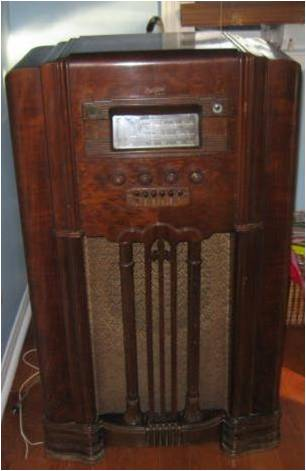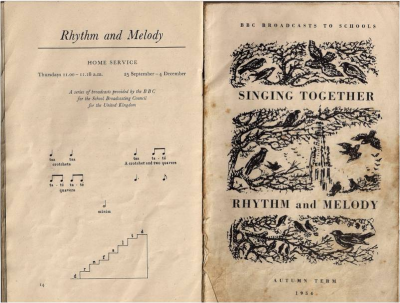By the 1920s, around one hundred and forty households in the village were in possession of a wireless set. The sets were mainly in use during the long dark winter months, but as soon as daylight increased, the amount of outside work increased, leaving cumbersome to use wireless sets broken and in need of attention. Battery operated sets worked with dry and wet batteries, wires, glass pieces and if you were lucky, a dial that picked up a radio wave offering at the most, a weather forecast, some news, and perhaps some wonderful concert music.
Once one household had a wireless set, interest would be awakened with curious neighbours. Market gardeners though, were headstrong with their opinion of the wireless set. Initially, they were unshakeable with their views on weather reports from a wireless set, as they knew best. However, at the onset of adverse weather conditions, such as a frost, their ears were tuned in to the wireless sets, to know exactly when to harvest perishable produce. Steep rises in market prices during frosty weather, encouraged even the stubborn gardener to listen in, then up the pace and rush to market before the weather changed. Once the critical weather periods were gone, the wireless weather forecasts were again ignored.
Development in new technology produced better wireless sets that didn’t look so ugly. The Crystal Receiving set with headphones, and other wireless apparatus, using accumulators, batteries, wire coils with knobs and handles, gradually gave way to the more user friendly electric wireless sets. Marconi always led the way and once electricity had been installed into people’s homes, there was no stopping the purchase of a wireless set housed inside a wonderful wooden cabinet, usually of walnut veneer. The speaker was at the front and had a familiar grill pattern on every set.
They were so cheap to run on electricity, compared to the price of replacing cumbersome batteries. Soon, shops were starting up in Evesham, ready to sell you a radio. Port Street had two shops: Abell and Smith, and Booth and Bomford. Advertisements cried out that once plugged in, your radio would cost you only 1s per year to run. Wave bands came along. Short, medium and long wavebands. All sorts of names came about as new technologies from the BBC enhanced wireless listening. The Home Service, was dedicated to news, drama and heavy discussion. The Light Programme, was entertaining in a light way, with music and entertainment to cheer people up after the 2nd world war. Then, a Third Programme, came about after the 2nd world war as a national programme more for the intellectual audience. The possibilities were endless.
In the 1950s, the BBC Home Service began Broadcasts to schools. A variety of subjects were on offer. Singing and dancing to folk music. School children were also taught the technicalities of crotchets and quavers with music.
Nature programmes educated school children as young as 9 and 10 on subjects like ants nests, and that the queen ant was the largest and most important insect in the nest.
During the 2nd World War, No 22 Sands Lane, Badsey was rented out to a Mr and Mrs Tuckwell. Mrs. Tuckwell was Aunty Dorothy from Uncle Mac’s Children’s Hour. It was a very popular programme for children, and Aunty Dorothy would read out stories that she wrote herself. Uncle Mac always ended the programme by saying “Goodbye Children, everywhere”.
Uncle Mac also did a Saturday morning Children’s favourites programme. Parents could write in to the BBC - on a postcard - requesting their children would like to hear a favourite song, such as The Teddy Bear’s Picnic. If the children were lucky, their names were read out.
The radio became so popular to all ages, that even nationwide, radios were hired out and shops like Radio Rentals appeared in most towns’ high streets.
Today, we live in a much more modern world, where information is more easily available. Traffic updates and the weather for Badsey are just a click away on the internet, or through local television stations. The anxious market gardeners listening to the radio from years ago are long gone. Now it is vehicle drivers desperate for a local traffic update before they set out from Badsey. So, the wireless set has played an important part in our village, in one way or another: from market gardeners anxious to know about frosty weather, to families being entertained, or to children being educated through the radio, during their school day. We don’t think anymore about a wireless set having to warm up before fiddling around with the dial to find the right wave length. We don’t have time for all that. Technology has moved on to accommodate all our needs.


Valerie Magan
14th February 2014
